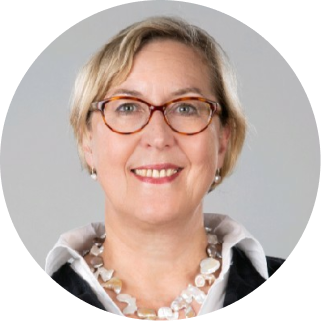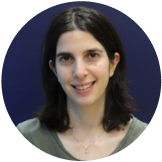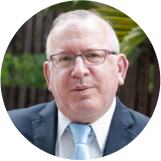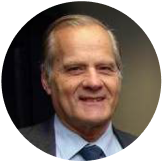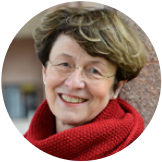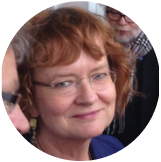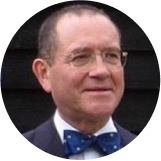Home | Stories & News | Post

- June 22, 2023
German-Jewish Sacred Musical Intersections
Story by: Prof. Edwin Seroussi (The Hebrew University Jerusalem) and Prof. Sarah Ross (University of Music, Drama and Media Hanover)
The Jewish Music Research Centre at the Hebrew University of Jerusalem, and the European Center for Jewish Music at the Hanover University of Music, Drama, and Media teamed up with the generous support of GIF to “undo” common, rather stereotypical ideas about the German-Jewish musical heritage.
Between 2019 and 2022, Prof. Edwin Seroussi (Israel) and Prof. Dr. Sarah Ross (Germany), and their teams of research assistants located, mapped, analyzed and made accessible to the public German Jewish (Ashkenazi) liturgical music from the early nineteenth century up to World War II, and interpreted this music in its broad European cultural context.
Within this innovative project we considered synagogues not as ritual spaces exclusively but rather as sites where the performance traditional and new music mediated the public display of evolving aesthetic ideals and intercultural interfaces between Jews and their surrounding non-Jewish society.
For centuries, the majority of Jews in Europe generally functioned as independent religious corporations that were rather isolated from the non-Jewish spaces of music making: anti-Jewish measures such as bans on settlement, prohibitions on land acquisition, lack of freedom of movement, special taxes, or restrictions on professional activities forced them into an existence on the periphery of the surrounding society and its musical venues such as courts and churches. Discrimination was accompanied by violence, persecution and expulsion.
It was not until the last third of the 18th century, with the Enlightenment and the French Revolution, that debates arose in Western and Central Europe regarding the status of the Jews leading to early attempts to grant them a certain degree of civic equality. Such opening included access of Jews to new musical capitals, such as entrance to conservatories, concert halls and opera houses.
Thus, the gradual entry of Jews into bourgeois society entailed greater social and cultural mobility. Multiple processes of negotiation between the preservation of the traditional Jewish musical heritage and the assimilation of the aesthetics and manners of music production (composition, use of music notation, professionalization of performers) of bourgeois Christian society emerged. While tradition-oriented Jews insisted on adherence to the religious practices of traditional rabbinic Judaism, progressive Jews consciously reached out to the surrounding society and initiated reforms, some moderate and some extreme, in areas such as education, socialization, religious practices and, expectedly, their music.
The path from the margins to the center of European society thus entailed new patterns of ritual performance as much as the construction of new performative spaces, cathedral-like synagogues, that fitted these new religious musical sensibilities. Since the second quarter of the 19th century, a new paradigm of Jewish liturgical music emerged with centers in Vienna, Berlin, Paris and London, seeking a dialogue with the “universal” language of (mostly German) European art music.
In northern Germany, for example, Reform congregations adopted patterns of Protestant worship, such as the use of the organ, a trained choir with a conductor, German language, and the choral genre; individual freedom and improvisation by the cantor, a staple of traditional Ashkenazi synagogue ritual, were largely curtailed in favor of a controlled performance by a trained precentor acting similarly to the Protestant Christian cantor. Most significantly, these radical changes curtailed the most characteristic aspect of the traditional Jewish manner of worshipping: the active participation of all congregants in the performance, a feature that generated a “raucous” sonic space that the reformers attempted to curb by turning the congregation into a largely passive body.
However, not all the reformer-minded community leaders and cantors promoted the total abolishing of the older rites. Most of them advocated diverse models of musical compromises in their synagogues, attempting to find formulae that bridged between the preservation of traditional melodies and diverse degrees of modernization. It is precisely this plethora of musical compromises that our joint German-Israeli research team attempted to map for the first time in its diversity and large geographical span.
The emergence, maintenance, development and preservation of different local repertoires of synagogue music in German-speaking congregations benefitted from the establishment of networks of individual cantors and their associations, schools and seminars for the training of music personnel, and synagogue choirs. These networks also generated a public discourse about synagogue music aesthetics in the Jewish and general music press.
More significantly for the goals of our project, these networks promoted the new aesthetics of synagogue musical performance in places as a far apart as London and Prague or Warsaw and Odessa, by means of establishing a prolific liturgical music publishing industry. The products of this industry, that only a small fraction of it became the object of the modern musicological discourse about Jewish music, enjoyed wide geographical distribution, at times reaching far away pockets of Ashkenazi immigrants in countries such as Australia or Argentina.
Our project was therefore able to draw on this wealth of unknown or little-researched musical sources. We located, processed and analyzed primarily printed and handwritten music, archival recordings, private estates of composers, cantors, and choir directors, and cantorial journals in libraries and archives in Europe, Israel, and the United States. The number of materials accumulated made clear that our project was just the beginning of an effort whose continuity will depend on a younger generation of students addressing our ground work in the future.
Although the focus of the project was primarily on the past, its findings are relevant to the present and future of Ashkenazic liturgical music performed in Europe and beyond. In present-day European Ashkenazi communities that survived annihilation and after years of consolidation of Jewish life in the new Europe, dynamics are beginning to emerge that lead to a renewed negotiation between preservation and renewal, tradition and creativity.
The joint German-Israeli project between Hanover and Jerusalem has shown that the revival of the Ashkenazi synagogue and the growing interest in its musical repertoire can benefit from the project’s results in both practical and theoretical terms. For example, an interactive map of Jewish liturgical music in print, a byproduct of our project, can offer contemporary cantors and synagogue choral conductors with models tested in the past that can inspire the future. Our GIF project concluded with a festive concert that took place in Hanover on December 8, 2022.
However, we look forward to many other future musical performances that will draw on our research.
* The PIs have also published a map of all known and available printed sources of liturgical music from the German-speaking Jewish world (https://music.jewish-cultures-mapped.org/#/project/58?_k=cbasaw). This interactive, web-based map, visualizes dynamic relations and trajectories in Jewish culture through a unique interface, consisting of an integrated map and timeline. It presents multimedia documentary information, including sound, still images, and video.
Related Posts
Dinner Discussion “Breaking Barriers: Bridging Science, Business, and Politics” at the Hermann Ehlers Academy in Kiel
On Thursday, July 4, the Hermann Ehlers Stiftung & Akademie hosted a dinner discussion entitled...
READ MORE »Luncheon with the German Federal Minister of Education and Research on the occasion of the German Studies Conference 2024
On Thursday, June 27, 2024, GIF director, Dr. Eric Zimmerman, had the great honor to...
READ MORE »2023/2024 Sylke Tempel Fellowship: Security Policies in Flux – New Perspectives on Israel and the Middle East
On June 20, 2024, GIF Director, Dr. Eric Zimmerman, was invited to the concluding event...
READ MORE »






